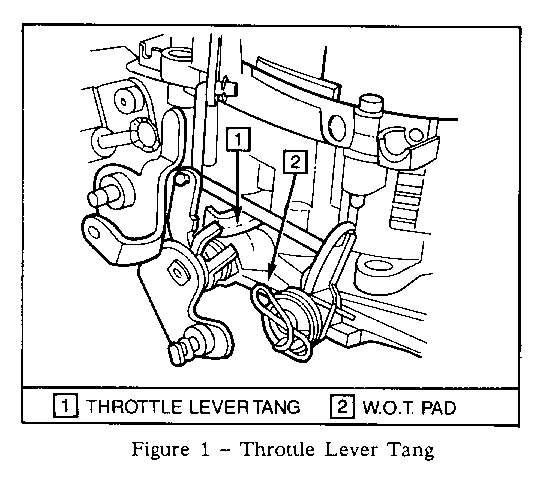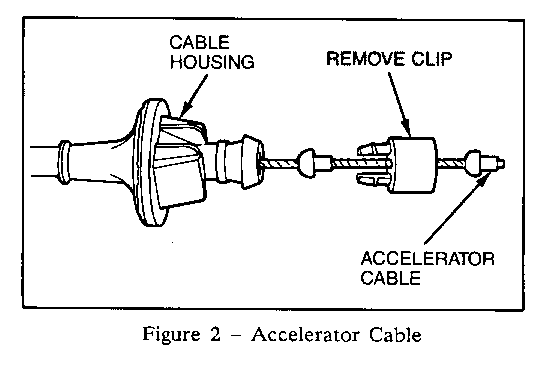INSUFFICIENT SECONDARY THROTTLE TRAVEL

MODELS AFFECTED: 1986-1989 BROUGHAMS
Some 1986 to 1989 Broughams may experience a condition of insufficient secondary throttle travel or an inability to reach Wide Open Throttle (WOT) from the driver's position. Full throttle can be achieved by operating the throttle lever by hand at the carburetor; however, opening the throttle by using the accelerator pedal from the driver's position may not provide sufficient secondary throttle travel.
This condition may result in several performance-related comments including:
- Lack of power or poor performance - No detent downshifts - 4-3 shift busyness - Cruise not holding speed under load (as on a hill)
To repair this condition, the following steps should be performed:
1. Have someone sit in the driver's seat and fully depress the accelerator pedal to the wide open throttle position.
2. Visually examine the carburetor throttle lever at the throttle speed screw. The backside of the throttle lever tang should be contacting the WOT pad on the throttle base, refer to Figure 1. If it is, the carburetor is at wide open throttle. Consult section 6E-B of the Service Information Manual for other causes of a poor performance comment.
3. If a gap exists between the throttle lever tang and the WOT stop pad with the accelerator pedal fully depressed, then the carburetor is not at wide open throttle. A shorter accelerator cable, P/N 25504323, is currently available from GMSPO to help improve secondary throttle travel. This cable is currently used in other applications and must be modified for use on the Brougham.
4. Referring to Figure 2, carefully cut the black plastic clip from the accelerator pedal end of the new cable. USE CARE NOT TO CUT THE METAL CABLE STRANDS. Once the clip is removed, replace the cable following normal service procedures. Refer to Section 6C of the Service Information Manual for cable routing, etc.
IMPORTANT: Vehicle performance can be a very subjective matter with many customer perceptions concerning speed and power. Replacing the accelerator cable may or may not satisfy all owner comments relative to their vehicle's performance. Other causes should be evaluated if a road test indicates that a performance-related condition still exists.
For warranty purposes use Labor Operation J5330 at .3 hour.


General Motors bulletins are intended for use by professional technicians, not a "do-it-yourselfer". They are written to inform those technicians of conditions that may occur on some vehicles, or to provide information that could assist in the proper service of a vehicle. Properly trained technicians have the equipment, tools, safety instructions and know-how to do a job properly and safely. If a condition is described, do not assume that the bulletin applies to your vehicle, or that your vehicle will have that condition. See a General Motors dealer servicing your brand of General Motors vehicle for information on whether your vehicle may benefit from the information.
